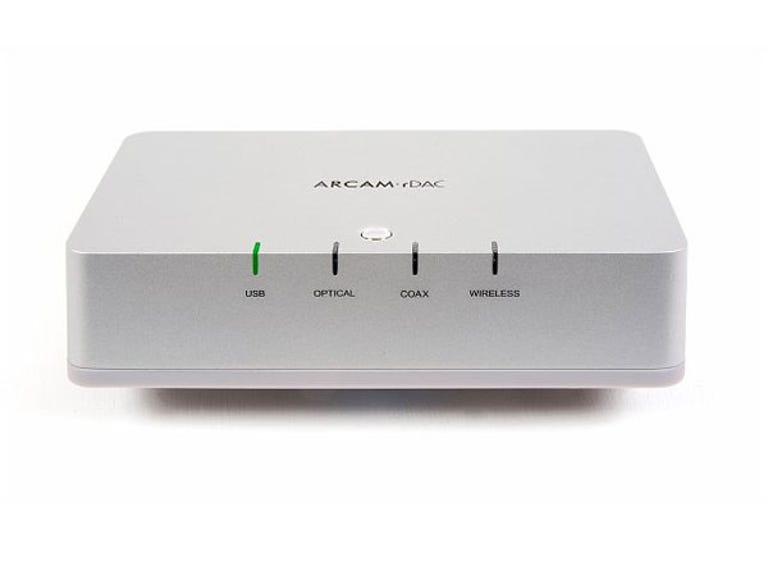 Why You Can Trust CNET
Why You Can Trust CNET Arcam rDAC review: Arcam rDAC
The Arcam rDAC is a perfect accompaniment to a media streamer or PC, as it enables you to ditch the CD player and enjoy high-quality digital files through your stereo.
While they were initially popular in the 80s and 90s, standalone digital-to-analog converters have enjoyed a resurgance recently due to the popularity of digital music files.
The Good
The Bad
The Bottom Line
Sad as it is to say, in a few years the local music shop that we know now won't exist and most people will get all of their music online. Services such as iTunes and newcomers like Sony's Music Unlimited online streaming service mean that people are just a click away from most of the music in the world.
But for the true audiophiles it's formats such as FLAC, WAV and Apple Lossless which are enabling PCs and portable players to rival — and even exceed — the quality of CDs. Today's DACs enable you to connect a USB cable to facilitate this, in addition to the regular optical and coaxial digital cables.
Arcam has taken the blue-print established by rival Cambridge's Audio DacMagic and expanded upon it with the release of two new models: the rDAC (AU$598) and the rDAC wireless (AU$775). If you buy an rDAC you have the option of buying an upgrade to the wireless version with a kit costing AU$198.
The rDAC features a higher specification than the DacMagic with the inclusion of a 24-bit/96kHz BurrBrown DAC which will also decode USB files at the same rate. This feature is welcomed as we criticised the Cambridge Audio product for its inability to process free, high-quality music from the likes of Nine Inch Nails and Radiohead.
The rDAC features fewer inputs than the Cambridge though as it only has one optical, one coaxial and one USB. On the output side it does both kinds of (non-PC) digital and stereo RCA. Like the Cambridge it also jettisons a remote control. The device instead uses a push button on top to cycle through the three (or four in the case of the wireless version) different inputs.
Build quality is exemplary with a sturdy rubber base and a compact design meaning it can fit into tighter spots than the DacMagic.
We used a mix of different devices to test the rDAC including the the iPhone (using the digital output of the Onkyo ND-S1 dock), the Oppo BDP-83 Blu-ray player and the Marantz NA7004 network player. As we hooked the rDAC into the Sony STR-DA5400 receiver we also compared it to the onboard sound as well.
There are many benefits to buying an outboard DAC — especially if you have an older receiver or analog amplifier. Using the rDAC we were able to dig out much more of the sound imprinted in the disk or held between the zeroes and ones of the digital files. Music had more impact and vibrancy, with details that might have seemed throwaway before now suddenly given their rightful attention.
Vocals were simply more expansive than the Sony could muster and once-woolly basslines such as in Nick Cave's "Red Right Hand" were now given enough space to swing their meat cleavers around. This more expressive bass was also able to propel rock and dance music forward, getting the feet tapping (or running away, in St Nick's case).
Compared to the Marantz NA7004 and the DacMagic the Arcam rDAC was able to carry a touch more exposition, and the ability to play 24-bit files meant that a new raft of music untouchable by the DacMagic was now playable.
If you're in the market for a new media streamer, or simply want to improve the sound of your DVD player, then the rDAC is a very good choice. We'd steer wide of the wireless version initially as it could be a little too expensive and fiddly for some tastes, and go for the standard version. You can always upgrade later.
If you had to choose between this and the DacMagic we'd get this if audio quality via USB was of utmost importance, while the Cambridge Audio product would sit users who wanted to plug in more than three devices, and perhaps do a little tweaking as well.


